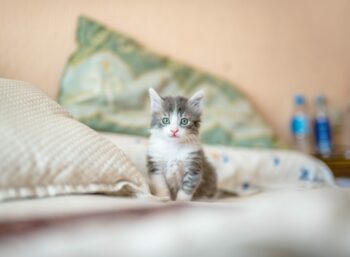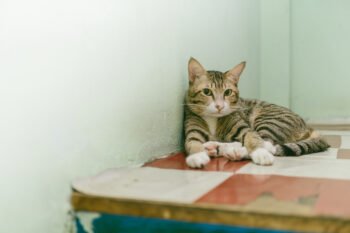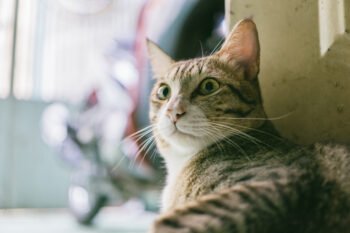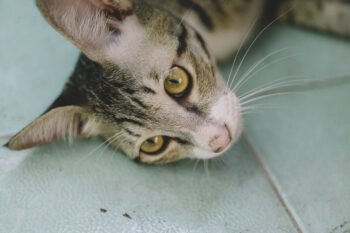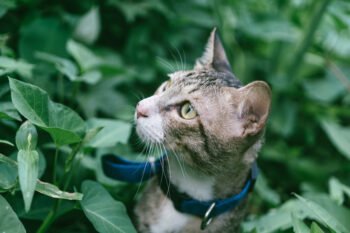Ursa Corynne, Sugar Cube, and Sir Linus: These are cats that are shattering the stereotypical image of cats as lazy, disinterested layabouts. These are the Olympians of the cat world.
“Most people do not believe that cats can be trained, as they seem more aloof and independent than dogs,” says Susan Lee, a feline agility trainer from Okemos, Mich. “But on an agility course, they look ahead to the next obstacle, like a horse on a jumping run — not like a dog, which takes each obstacle individually.”
Feline agility training and competition is a relatively new phenomenon, starting less than a decade ago. Today, many cat shows nationwide feature agility competitions. Both of the major cat fancier organizations — The International Cat Association (TICA) and The Cat Fanciers’ Association (CFA) — have dedicated agility-training programs. “TICA started encouraging clubs to put on agility shows and tournaments, and it’s taken off on its own,” says Bill Lee, Susan Lee’s husband and a fellow official for International Cat Agility Tournaments (ICAT). “Now it has its own following, and there are even some tournaments without a cat show associated with it.”
Competitive Cats
The typical agility course (aka the “ring” or “arena”) consists of a series of ramps, tunnels, hurdles and other obstacles that cats must weave in and out of, up and over, and in a specific order with the coaching of a trainer. Each run is timed, and cats are judged on a combination of speed and how many faults, or errors, they commit.
Cats need to complete the course in fewer than 4.5 minutes to qualify, but Jill Archibald, agility coordinator for CFA, says most complete it in less than a minute, and about 15 percent do so in fewer than 20 seconds. Reports of the best time vary depending on whom you ask, but one clear standout is Ursa Corynne, a Bengal whose owner — Tami Savard of Xenia, Ohio — claims a record time of 4.69 seconds.
“When she was little and still nursing, we taught her to drink water from a straw. Now, whenever I have a drink, she jumps into my arms and tries to take the straw,” says Savard. “Most cats are led through the course with a toy, but we use a straw! Before she’ll run the course, Ursa needs to rub on each piece of equipment to make it smell like her. She then rolls on the floor. After that, she is ready to run.”
What Makes a Champion Agility Cat?
After entering and scoring well in several different competitions, a cat can earn the title of Champion or Master (depending on the scoring organization). Most people involved agree that youth is a big asset, as many agility cats perform best as kittens.
“As kittens, they are really focused on the toy that leads them around the ring,” says Susan Lee. “When they become adults (age 8 months), they become hormonal and are distracted by the other cat smells in the arena.”
The other important quality is a calm and outgoing disposition. Although the courses are enclosed in a fence or mesh, the surrounding area is busy, loud and distracting, with strangers and possibly even barking dogs roaming around. A cat needs to keep its cool amid this chaos.
“The first thing a cat wants to be is safe; if it feels safe, it feels comfortable to do other things,” says Archibald, whose Egyptian Mau, Sugar Cube, is a tournament standout. “Sugar Cube hasn’t met a person she doesn’t trust and get along with. If your cat has this personality and athletic ability, you could have a winner.”
Archibald encourages all interested cat owners to give it a shot, but stresses not to expect too much. “Not all cats are going to do this. Some will walk over to the agility arena, lie down and take a nap.”

